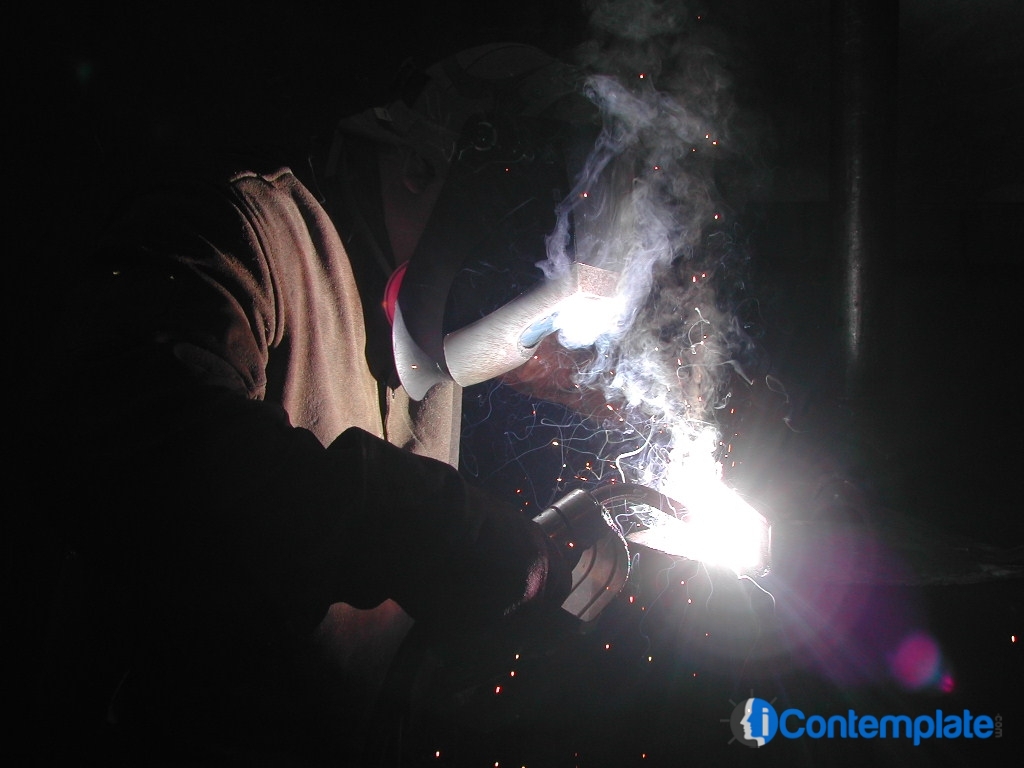<p style="text-align: justify;">The art of welding is an ancient tradition. Developed in the Middle Ages, the basic process of joining two pieces of metal together has not changed much throughout history. The process, which involves the joining of metals or thermoplastic material at a joint with the use of a filler, can take place in a variety of environments, including underwater. Welding in the United States represents a significant portion of the U.S. economy (in terms of GDP) with the majority of welding expenditures made up by labor costs.</p>
<p style="text-align: justify;">Here is a brief history of welding through the years. Below, we look at the evolution of practices from the Middle Ages through present day and examine the state of welding today, with an eye towards the future.</p>
<h3 style="text-align: justify;"><b>Early Development of Welding Practices </b></h3>
<p style="text-align: justify;">The earliest forms of welding took place in the Middle Ages, the period between the 5th and 15th century A.D. (400 – 1400). Examples of the craft were found in the forms of welded gold boxes as well as tools fabricated in Egypt. The Middle Ages also saw the development of specialized tradesmen, known as Blacksmiths, who advanced the craft.</p>
<p style="text-align: justify;">Techniques developed by blacksmiths and their use of a hearth for fire, anvils, cutters, and hammers gave rise to the evolution of welding. Forge welding came about by blacksmiths and their use of three different heats for different types of metal welds. These included the white or snowball heat for iron welds, full heat for steel, and a low heat for skillful welding projects. These techniques have carried into many of the innovations that came about, especially between the 1800s and late 20th Century.</p>
<h3 style="text-align: justify;"><b>Innovations in Welding Throughout the Years </b></h3>
<p style="text-align: justify;">Many different types of welding processes have evolved over the past several centuries. These include: arc, solid state, brazing, soldering, resistance, and oxyfuel gas welding. In addition to the different welding processes, there are different allied processes and cutting involved in the welding process. These include thermal spraying, adhesive bonding, oxygen cutting, and arc cutting.</p>
<p style="text-align: justify;">In the late 1800s, the use of open flames became part of the welding process. This was an important advancement, as it led to the introduction of soldering methods that ensured stronger joints and bonds between welds. Over time, additional welding processes were invented and perfected, including arc welding (c. 1880s), the development of automatic welding processes (c. 1920s), gas shielded and heliarc welding in 1944 (which took the place of oxyfuel gas welding as a preferred method for welding aluminum alloys), plasma arc welding (c. 1960s) and more modern processes today, which include friction and laser welding.</p>
<h3 style="text-align: justify;"><b>State of Welding as a Trade and a Profession </b></h3>
<p style="text-align: justify;">Welding involves many different industries in the U.S. economy. Welding is integral to heavy engineering projects, shipbuilding, large construction projects, auto making, and other related industries. There are more than 337,000 welders, cutters, solderers, and brazers in the U.S. alone (according to the 2010 Census) and an estimated 50,000 more positions could be added by 2020.</p>
<p style="text-align: justify;"><em>Along with welding, Danny Cartwright focuses on metallurgy, physics, woodworking &; carpentry, materials science, precious metals, general construction and other such topics. To learn more, Danny recommends texasironandmetal.com, a company with a substantial steel supply in Houston, TX.</em></p>
<p style="text-align: justify;"><em>Image credit goes to parkerwelds.</em></p>

A Brief History Of Welding
